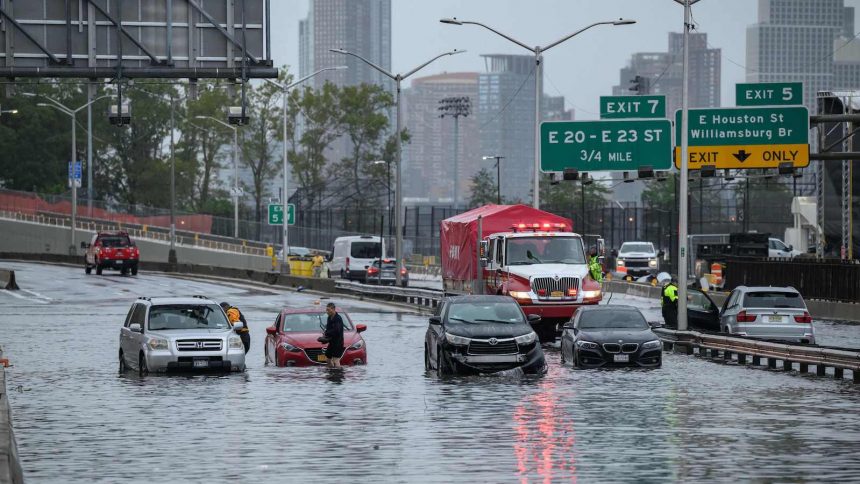At the end of July 2023, 3.07 inches of rain fell on Boston in a single day, causing the city’s sewer systems to be overwhelmed. This led to a discharge of sewage into Boston Harbor, prompting a public health warning. The summer of 2023 would go on to become Boston’s second-rainiest on record. Just two months later, New York City experienced a record-setting rain event when 8.65 inches of rain fell in a single day, the highest for any September day since Hurricane Donna in 1960. This intense rainfall caused flooding in low-lying areas of the city, resulting in half of its subway lines being suspended due to water inundation in underground stations.
The East Coast cities are facing increased vulnerability to flooding due to climate change. Inadequate infrastructure exacerbates the problem. Boston and New York have combined sewer systems, which carry both stormwater and sewage in the same pipes. When these systems reach capacity during heavy rainfall or storm surge events, they overflow, sending a mixture of stormwater and raw sewage into waterways, streets, and sometimes even homes.
Both cities are taking different approaches to address their sewer system challenges. Boston is separating its combined sewer system to prevent sewage from mixing with stormwater during flooding events. On the other hand, New York is investing in new, detached rain management infrastructure to reduce the burden on its combined sewers during rainfall. The success of these solutions is crucial not only for reducing flooding hazards but also to comply with the Clean Water Act, as combined system overflows are violations of the law.
Boston is prioritizing sewer separation projects to prevent overflows in areas at high risk of contamination by contaminated water, such as public beaches. However, these projects come with a high price tag. The city is facing challenges in finding space for additional pipes in some areas. New York City, on the other hand, is banking on green infrastructure like rain gardens and underground storage tanks through its Cloudburst plan. These initiatives aim to divert stormwater during heavy downpours and mitigate flooding risks.
As climate change intensifies, cities like Boston and New York are racing to upgrade their sewage systems to ensure they can handle increasing precipitation and reduce the risk of flooding. The cost and complexity of these projects highlight the urgent need for continued investment in infrastructure to protect public health and the environment.






